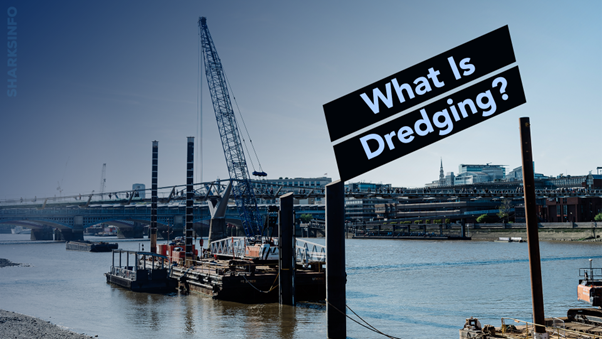Over time, the waste products, debris, and pollutants accumulated in the water bodies not only pollute the aquatic environment but also affect the life under the water. A person can’t clean large water bodies, so a remarkable technique of dredging has been implemented to clean the water habitat.
What Is Dredging?
Dredging is a process of clearing underwater sediments such as soil and rocks from silt, debris, and contaminants that may enter the water from shipping harbors, rivers, lakes, or coastlines. The process is performed periodically to maintain or increase the depth of navigation channels and make them safe for ships and boats.

What Are The Types Of Dredging?
Dredging is performed by 4 processes which are listed below:
- Mechanical Dredge: Mechanical methods used to remove the debris through clamshells, backhoes, or buckets
- Hydraulic Dredge: Hydraulic methods includes the use of large hydraulic pumps which remove the waste and transport them via pipelines towards the final destination.
- Hopper Dredge: This method is used to remove sand, mud, clay, or silt usually from the entrance channels of the oceans, and can efficiently transport the material without the need for towing.
- Cutter Suction Dredge: It is a process by which the material is dragged with the pipes from the oceans and is transported directly towards the placement sites via discharge pipes. It works efficiently and is cost-effective. Moreover, it includes large blades to break large fragments into small ones.

Where Does Dredging Take Place?
The dredging depends upon the consistency of the material. It is performed at 5 major places:
1: Main Approaches: These are the channel in the ocean which is composed primarily of sand.
2: Bar Channels: These are the sandbars at inlets which are composed of coarse-grained sand.
3: Entrance Channels: These are harbors areas where the material is composed of sand, clay, and fine-grained silt.
4: Berthing Areas: These are the areas near harbors or ports where the material is probably silt and some sand.
5: Inland Waterways: These are Intracoastal waterways and river channels, here the material is composed of silt and sand.
What Are The Applications Of Dredging?
Dredging has many applications, such as:
- Construction Dredging: It is used in construction projects, especially for the creation of trenches for tunnels or pipelines.
- Environmental Dredging: It is used to remove contaminants from the environment and maintain pollutant-free surroundings.
- Mining Dredging: It is used to dig sand, coal, gravel, metals, and other minerals, deep from the water bodies.
- Navigational Dredging: This type of dredging is used to increase the waterways and channels for the purpose to enhance the navigation system.
- Recreational Dredging: This is applied to clean, deepen and expand the lakes that have become shallow from the overgrown and useless vegetation.
- Restoration Dredging: As the name indicates, it is used to restore the streams, lakes, beaches, and coastlines that are affected by debris.

What Are The Main Purposes Of Dredging?
Well, there is a number of reasons behind the dredging, some of which are compiled below:
- Dredging is performed for the safe movement of ships and boats from the channels.
- To protect the industrial and residential areas.
- To protect the wildlife and birds’ habitat.
- To remove contaminants and improve the quality of water.
- To provide flood control by managing the tidal movements.
What Type Of Assessment Is Required For Dredging?
Dredging is a very crucial process that requires proper planning, construction techniques, and designs and involves researchers, engineers, and trained crew with remarkable skills. It requires geophysical and geological analysis to understand the nature of the material which is needed to be dredged, as well as the impact on the environment, should be noticed.
Final Thought
Dredging is a process of removing the debris or unwanted material which gets deposited in the water bodies over time. There are various procedures by which dredging can be made possible to clean large water bodies as well. Dredging helps remove contaminants, and pollutants, to allow the safe movement of ships and boats from the navigation channels as well as to protect the aquatic ecosystems.







